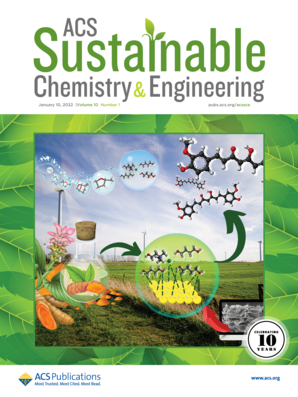单细胞蛋白生产的环境洞察:生命周期评估框架
IF 7.1
1区 化学
Q1 CHEMISTRY, MULTIDISCIPLINARY
引用次数: 0
摘要
创新的蛋白质来源,如从单细胞生物生物量中提取的单细胞蛋白(SCP),正在成为解决粮食短缺和满足全球营养需求的有希望的解决方案。本文旨在通过事前生命周期评估(LCA)来估计利用渔业废物中的生物甲烷生产SCP的环境影响,重点是扩大实验室规模的过程。提议的方案包括SCP生产和生物肥料回收(基线方案),以及生物甲烷作为电网燃气、电力和/或热能的附加增值(修改方案)。分析遵循从摇篮到闸门的方法,并通过扩大系统边界来考虑避免的初级生产,包括回收的材料和能源。结果显示,实验室规模和工业规模的影响之间存在显著差异,当规模扩大时,所有影响类别的减少幅度从60%到96%不等。以工业规模为重点,基线情景显示环境绩效最差,主要是由于未利用的沼气产生的生物甲烷排放。相比之下,纳入各种生物甲烷利用途径的修正情景在所有影响类别中都实现了大幅减少。这些发现表明,最佳的系统配置结合了生物甲烷的回收、热量和电力,强调需要进一步研究其在食品部门的技术和经济可行性。本研究强调了LCA在评估新兴技术、识别关键环境挑战和指导早期开发阶段决策方面的效用。本文章由计算机程序翻译,如有差异,请以英文原文为准。

Environmental Insights into Single-Cell Protein Production: A Life Cycle Assessment Framework
Innovative protein sources, such as single cell protein (SCP) derived from unicellular organism biomass, are emerging as promising solutions to address food scarcity and meet global nutritional needs. This article aims to estimate the environmental impacts of SCP production using biomethane from fish industry waste through an ex-ante Life Cycle Assessment (LCA), focusing on scaling up a lab-scale process. The proposed scenarios include SCP production with biofertilizer recovery (baseline scenario) and the additional valorization of biomethane as grid gas, electricity, and/or heat (modified scenarios). The analysis follows a cradle-to-gate approach, and recovered materials and energy were included by expanding the system boundaries to account for avoided primary production. Results revealed significant differences between laboratory-scale and industrial-scale impacts, with reductions ranging from 60% to 96% across all impact categories when scaled up. Focusing on the industrial scale, the baseline scenario showed the poorest environmental performance, mainly due to biogenic methane emissions from unutilized biogas. In contrast, modified scenarios that incorporated various biomethane utilization pathways achieved substantial reductions across all impact categories. These findings suggest that the optimal system configuration combines the recovery of biomethane, heat, and electricity, underscoring the need for further research into its technical and economic feasibility within the food sector. This research highlights the utility of LCA in evaluating emerging technologies, identifying key environmental challenges, and guiding decision-making at early development stages.
求助全文
通过发布文献求助,成功后即可免费获取论文全文。
去求助
来源期刊

ACS Sustainable Chemistry & Engineering
CHEMISTRY, MULTIDISCIPLINARY-ENGINEERING, CHEMICAL
CiteScore
13.80
自引率
4.80%
发文量
1470
审稿时长
1.7 months
期刊介绍:
ACS Sustainable Chemistry & Engineering is a prestigious weekly peer-reviewed scientific journal published by the American Chemical Society. Dedicated to advancing the principles of green chemistry and green engineering, it covers a wide array of research topics including green chemistry, green engineering, biomass, alternative energy, and life cycle assessment.
The journal welcomes submissions in various formats, including Letters, Articles, Features, and Perspectives (Reviews), that address the challenges of sustainability in the chemical enterprise and contribute to the advancement of sustainable practices. Join us in shaping the future of sustainable chemistry and engineering.
 求助内容:
求助内容: 应助结果提醒方式:
应助结果提醒方式:


